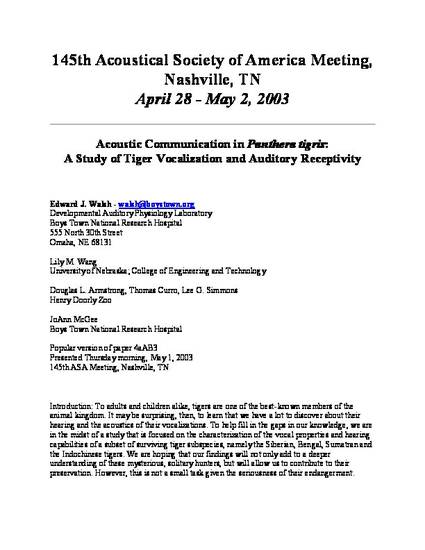
Presentation
Acoustic Communication in Panthera tigris: A Study of Tiger Vocalization and Auditory Receptivity
Durham School of Architectural Engineering and Construction: Faculty Publications
Date of this Version
1-1-2003
Disciplines
Abstract
To adults and children alike, tigers are one of the best-known members of the animal kingdom. It may be surprising, then, to learn that we have a lot to discover about their hearing and the acoustics of their vocalizations. To help fill in the gaps in our knowledge, we are in the midst of a study that is focused on the characterization of the vocal properties and hearing capabilities of a subset of surviving tiger subspecies, namely the Siberian, Bengal, Sumatran and the Indochinese tigers. We are hoping that our findings will not only add to a deeper understanding of these mysterious, solitary hunters, but will allow us to contribute to their preservation. However, this is not a small task given the seriousness of their endangerment.
Citation Information
Edward J. Walsh, Lily M Wang, Douglas L. Armstrong, Thomas Curro, et al.. "Acoustic Communication in Panthera tigris: A Study of Tiger Vocalization and Auditory Receptivity" (2003) Available at: http://works.bepress.com/lilymwang/16/

Published in 145th Acoustical Society of America Meeting, Nashville, TN, April 28 - May 2, 2003, pp. 1-4